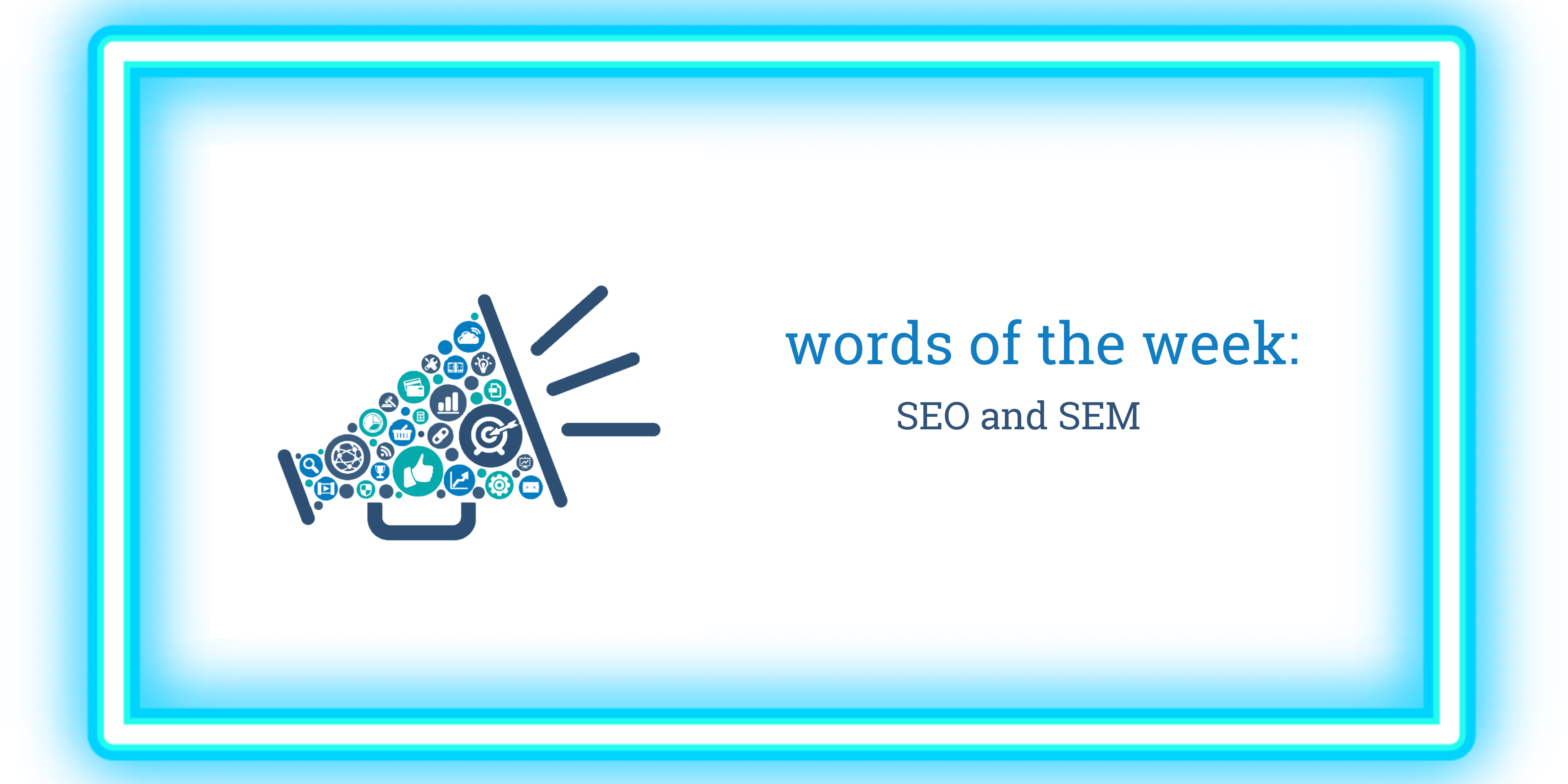SEO and SEM
This week in ‘words of the week’, we are going to dive into SEO and SEM, explaining what these mean and how to use them in marketing strategies. Other acronyms associated with SEO and SEM include SERPs, PPC and ROI.
What is SEO?
SEO stands for Search Engine Optimisation. To explain it simply, it is a strategy where you include keywords on your website with key search words that your customers are using when they search on engines such as Google and Bing. By doing this, it helps your website rank higher on SERPs or Search Engine Result Pages, increasing the possibility on a prospective customer visiting your website.
This type of search result is referred to as ‘organic search’, where there is no advertising fee to appear in the search.
Choosing the right SEO keywords
Consider the buying phase that your target market are in when determining the keywords they might use when they search. Customers seeking general information may use broad search terms. If customers are in a consideration phase, they may include a specific location, or a more specific feature that they are looking for. Those customers that are ready to purchase a product or service may know a specific company name.
How to use SEO keywords
Website optimisation has two key components. The first involves keywords written in website content. The second is how keywords are used in coding the website. Having savvy, regularly updated content and an experienced website developer coding the site are key to ensuring optimal performance on SERPs.
Keyword performance can be monitored through Google Search Console https://search.google.com/search-console/about and Bing Webmaster Tools www.bing.com/webmasters/about
What is SEM?
SEM stands for Search Engine Marketing. This is a form of online advertising where you pay to increase your visibility in SERPs such as Google Ads.
How to use SEM
The main paid form of SEM advertising is PPC or Pay-Per-Click. PPC is advertising specifically designed to drive traffic to a website. It is where companies bid for an ad spot and then pay the advertising platform such as Google, Bing, Facebook or LinkedIn whenever someone clicks on an ad that takes them to the website.
Calculating ROI
ROI stands for Return on Investment. To determine this you need to know how much you have spent on SEM versus the profit made from a result of it. Google Ads help has an example of this.
https://support.google.com/google-ads/answer/14090?hl=en
Is your website performing in search results? Do you want to drive more traffic to your website? Word out can help you craft a search engine strategy by helping you to say things differently and create connections.
Reach out today

